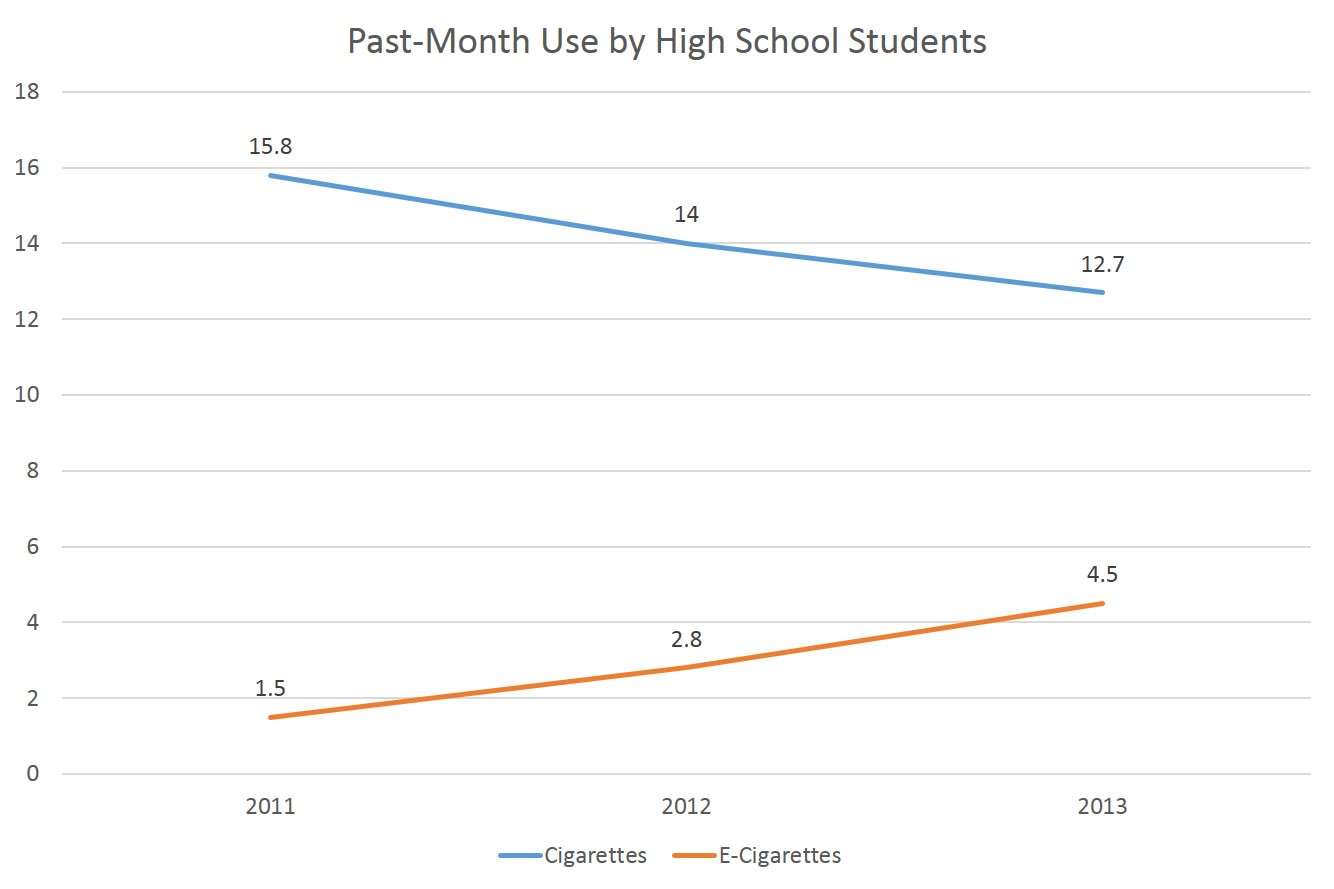Smoking by Teenagers Continues to Fall As Vaping Continues to Rise
Yesterday the U.S. Centers for Disease Control and Prevention (CDC) released survey data that show cigarette smoking by teenagers continued to fall last year even as their use of electronic cigarettes continued to rise. Between 2011 and 2013, according to the National Youth Tobacco Survey, the prevalence of "current" (past-month) cigarette smoking among high school students fell from 15.8 percent to 12.7 percent, while the prevalence of current e-cigarette use tripled from 1.5 percent to 4.5 percent. This is not what you would expect to see if the rising popularity of e-cigarettes stimulated demand for the conventional kind, as CDC officials repeatedly have warned might happen.

Last year, for instance, CDC Director Tom Frieden said "many teens who start with e-cigarettes may be condemned to struggling with a lifelong addiction to nicotine and conventional cigarettes." In April he worried that e-cigarettes will "get another generation of kids more hooked on nicotine and more likely to smoke cigarettes." A month later Tim McAfee, director of the CDC's Office on Smoking and Health, condemned the marketing of e-cigarettes as an "egregious experiment" on "our children."
The CDC's discussion of the latest data is a bit more restrained. "Although the long-term impact of e-cigarette use on public health overall remains uncertain," says an article in the agency's Morbidity and Mortality Weekly Report, "the 2014 Surgeon General's report found that nicotine use can have adverse effects on adolescent brain development; therefore, nicotine use by youths in any form (whether combustible, smokeless, or electronic) is unsafe." Maybe so, but some kinds of nicotine use—in particular, the ones that involve inhaling tobacco smoke—are decidely more unsafe than others. If teenagers who otherwise would be smoking are vaping instead, that should count as a public health improvement. In any case, the unverified risk that e-cigarettes might serve as a "gateway" to smoking should not be accepted as a valid reason for restricting adult smokers' access to a product that can dramatically reduce the health hazards they face.


Show Comments (11)